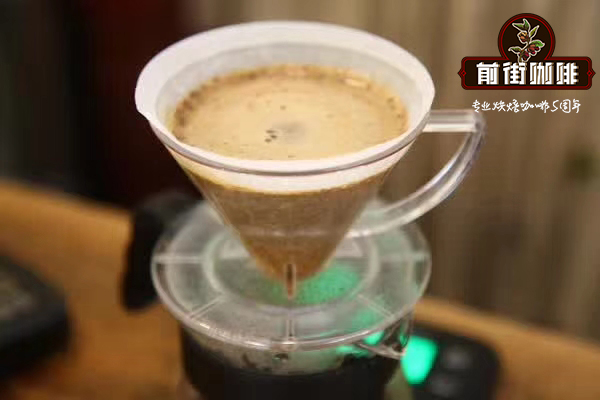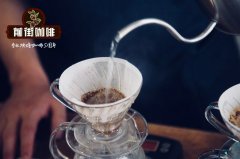What is the difference in flavor between yellow honey, red honey and black honey treated in Costa Rica?
Located in the isthmus of Central America, bordered by Nicaragua in the north and Panama in the south)
It turns out that Costa Rican boutique coffee only began to come to the fore in the past decade. Although Costa Rica introduced coffee from Cuba as early as 1729 and carried out commercial cultivation, it made great efforts to develop the coffee bean industry. But it mainly produces and distributes mixed coffee beans and Italian commercial beans for export to its nearest neighbor, the United States, which is one of the largest coffee consumers. Because of this, the quality of Costa Rican coffee beans at that time had not yet reached the level of fine coffee. Moreover, due to the poor quality of coffee beans, Costa Rica does not have a national standard (a national standard for regulating the grade of raw coffee beans), because its country is not qualified to evaluate it.
Until later, Costa Rica in order to strengthen the export of high-quality coffee to Europe, the United States, Japan and other countries. Just began to vigorously develop high-quality coffee and increase the added value of coffee exports. At the same time, the government has set up a "coffee trust fund" to help coffee farmers in need tide over their financial difficulties and cultivate high-quality coffee. And in order to make coffee have better quality and characteristics, we used the popular honey treatment method in recent years to change the reputation of poor quality coffee. Therefore, the Costa Rican boutique coffee we are now exposed to is the fine processed honey beans of each of its estates. However, there are still coffee beans treated with ordinary sun water, but the quality and flavor are not so good, so they are not as widely traded as honey-treated beans. Honey treatment method
Honey treatment, called HoneyProcess or Miel Process, is used in coffee gardens in Costa Rica (Costa Rica), Panama (Panama) and Guatemala (Guatemala), which is called Honey Coffee. The so-called honey treatment refers to the process of making raw beans with mucous membrane for sun-drying. After the outer pulp of the coffee bean is removed, there will be a layer of sticky jelly. The traditional washing method washes it away with clean water, but this direct drying method has been born because of the limitations of water resources in some high-altitude areas. According to NordicApproch, Seattle Coffee and Origin Coffee, the raw bean companies run by the big shot Tim, it can be summed up:
Yellow honey: about 40% of the pectin is removed; the drying method requires the most direct heat absorption, receives the most light drying, and lasts for about 8 days to reach a stable water content.
Red honey: about 25% of the pectin is removed; it takes longer to dry than yellow honey, and reduces direct exposure to sunlight, even in shading sheds, lasting about 12 days.
Black honey: retain close to 80% pectin; dry for the longest time, lasting at least 2 weeks, with a cover to avoid too strong sunlight, prevent drying too fast, and make sugar conversion more fully.
The advantage of honey treatment is that it can best preserve the original sweet flavor of ripe coffee, giving the coffee a light black sugar flavor and drupe flavor, while the berry flavor also supports the basic aroma of red wine, which is considered to be a very elegant product. A brief summary:
Sweetness: black honey > red honey > yellow honey > white honey
Cleanliness: White honey > yellow honey > red honey > black honey
Sense of balance: red honey / yellow honey > black honey / white honey more professional coffee exchanges please scan the code to follow Wechat: FrontStreetCoffee

Important Notice :
前街咖啡 FrontStreet Coffee has moved to new addredd:
FrontStreet Coffee Address: 315,Donghua East Road,GuangZhou
Tel:020 38364473
- Prev

What's the difference between Ethiopian Rose Summer and other beans? What are the reasons and the terrain that make it different?
Professional coffee knowledge exchange more coffee bean information please follow the coffee workshop (Wechat official account cafe_style), the origin of the Rosa Village in Ethiopia the owner of Gesha Village is Adam Overton, a genuine American, his predecessor is not a coffee shop owner, but a documentary filmmaker. And his wife, Rachel Samuel, is Essel.
- Next

Brazil Shenmu Manor Huang bourbon
Brazil _ Santio _ Shenmu Manor Yellow Bourbon Brazil Fazenda Sertaozinho Yellow Bourbon Pulped Natural Brazil COE Cup award-winning numerous farms themselves have a tropical rain forest reserve of 300ha, of which the most striking and symbolic representative of Shenmu Manor is the Shenmu Cariniana legalis, which is more than 40 meters, according to a rough estimate by the owner.
Related
- Does Rose Summer choose Blue, Green or Red? Detailed explanation of Rose Summer Coffee plots and Classification in Panamanian Jade Manor
- What is the difference between the origin, producing area, processing plant, cooperative and manor of coffee beans?
- How fine does the espresso powder fit? how to grind the espresso?
- Sca coffee roasting degree color card coffee roasting degree 8 roasting color values what do you mean?
- The practice of lattes: how to make lattes at home
- Introduction to Indonesian Fine Coffee beans-- Java Coffee producing area of Indonesian Arabica Coffee
- How much will the flavor of light and medium roasted rose summer be expressed? What baking level is rose summer suitable for?
- Introduction to the characteristics of washing, sun-drying or wet-planing coffee commonly used in Mantenin, Indonesia
- Price characteristics of Arabica Coffee Bean Starbucks introduction to Manning Coffee Bean Taste producing area Variety Manor
- What is the authentic Yega flavor? What are the flavor characteristics of the really excellent Yejasuffi coffee beans?

